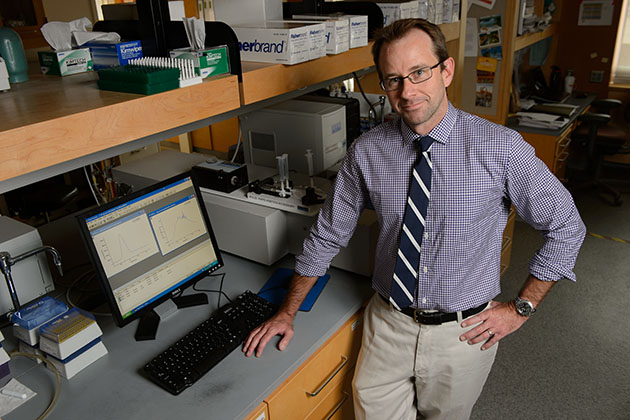Researchers and clinicians are exploring many potential medicinal approaches for investigating and treating the root causes of diseases including gene and enzyme replacement therapy. But another therapeutic approach is to develop compounds that maintain cells in a healthy state. Cellular organelles called mitochondria are increasingly recognized as promising targets for such compounds.
Mitochondria are responsible for metabolic processes which give our cells the energy they need to carry out all their functions. However, because mitochondria are so critical for cell health, mitochondrial dysfunction is associated with many primary heritable diseases and aging-related pathologies including cancer, diabetes and neurodegeneration.
Mitochondrial diseases have serious health consequences and yet there are no known cures for them. But scientists have identified a kind of peptide as a promising therapeutic candidate. Szeto-Schiller (SS) peptides are synthetic molecules capable of selectively targeting to mitochondrial membranes. SS peptides have already displayed broad efficacy in treating mitochondrial dysfunction in preclinical and clinical trials.
Associate professor of molecular and cell biology Nathan Alder has received an R01 grant from the National Institute of Aging to develop a deeper understanding of how these peptides work. This grant totals $2.5 million to support the five-year project.
“This family of peptide compounds offers exciting new possibilities in mitochondrial medicine,” Alder says. “We know that they show great promise for treating heritable and aging-related diseases. Our objective is to understand how they work at the molecular level as a means of developing next-generation compounds that could be more effective.”
Alder and his team are conducting what is to-date the most in-depth analysis of the molecular mechanism of action of SS peptides. They are investigating how SS peptides interact with the membranes of mitochondria that are enriched in cardiolipin, a phospholipid is required for the structure and function of the inner mitochondrial membrane. This work will explore SS peptide interactions with healthy, cardiolipin-rich membranes as well as those that model disease states to understand how and where these peptides are operating.
To better understand the mechanism at work here, Alder and his team will build upon the insights they already have to test, refine and expand their existing models. Specifically, they will determine how SS peptides interact with the membrane’s lipid bilayers.
These interactions can impact the assembly and stability of membrane complexes, lipid distribution and turnover, which are often critical factors in disease onset and development. By understanding how SS peptides can manipulate membranes, they can be leveraged for therapeutic approaches.
This research program involves a highly interdisciplinary team of researchers. This includes UConn professors Eric May, a computational biologist, Andrei Alexandrescu, a structural biologist and Ji-Young Lee, an expert on cellular metabolism. The UConn researchers will collaborate with mitochondrial phospholipid expert Steven Claypool from the Johns Hopkins School of Medicine and Hazel Szeto who was the first to discover and develop these peptide compounds.
Alder’s team will also identify the physiochemical properties of SS peptides most important to their mechanism. They will test a library of rationally designed peptide variants to test differences in how they interact with membranes using computational and biophysical approaches. By testing the effects of specific changes in the chemical makeup of these peptides, they will learn the important factors that underpin their function.
As mitochondria are structurally complex organelles, the researchers will work to establish the specific sites within the membrane at which SS peptides interact.
They will then use yeast and mammalian models to evaluate the effects of SS peptides on the membrane structure and function. This will provide them with a realistic picture of how the peptides may operate within human cells.
Supported by the knowledge gained in earlier steps of the project, Alder’s team will analyze how SS peptides restore function under pathological conditions implicated in type II diabetes and Alzheimer’s disease.
By investigating the function and chemical composition of different peptide variants in several applications, Alder and his team will produce unprecedented insights into this promising therapeutic candidate. The kind of precise information Alder’s team will gather about how SS peptides interact with mitochondria will pave the way for the development of well-informed therapeutic approaches.
Alder holds a Ph.D. from the University of California Davis. He completed postdoctoral work at Texas A&M University. His research interests include analysis of the structure, function, and biogenesis of mitochondrial membranes and membrane proteins. Using a host of biophysical experimental approaches, his research program focuses on mitochondrial phenomena relevant to human health and disease.



